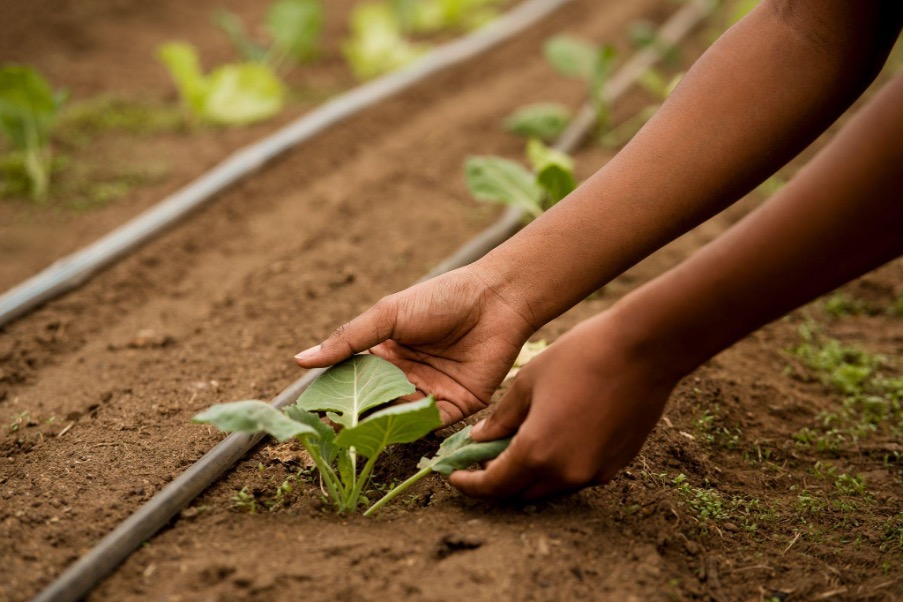Farming is the very roots of humanity, while it is undergoing enormous pressures to stay sustainably in this century. Meeting the demands of an ever increasing World population would need disruptive technologies and innovations to be successful. This is exactly where automation and artificial intelligence can show their full potential by allowing for smart and prolific agriculture.
Agricultural sector has proven to be slower in adopting information technology than other industries. However, today, we witness the rise of automation in the land retrieval processes, which concerns the use of robots, sensors, imagery and processing data. These technologies can automate tasks, reduce waste, and provide far only with data-driven analytics to attain crop yields properly.
Automation of Manual Labor with Robots and Drones Using Artificial Intelligence Technologies.
The major part of old-fashioned agriculture is manual labor and almost kills people due to hard labor. Automation of certain professions such as robots and drones can help farmers and farm hands to get stronger productivity and efficiency.
Robots will be able to sow seeds, weed plantations, prune the vines, pluck fruit, and cut crops as well. New farm startups such as Abundant Robotics and FarmWise are now developing autonomous robots which can perform monotonous duties on farmlands. Unmanned drones with multispectral cameras can produce plant health maps that help identify the spots that need some fertilizer or are damaged with the diseases. Thus, it ensures that chemicals are used wiser.
Crops are Observed using Sensors and Image in terms of Surveillance.
With sensor connected farms, the data is provided in near real time, this data can be used to give feedback on soil conditions, crop growth metrics, equipment performance and the environmental parameters. It is therefore critical to utilize this data for precision agriculture that is able to achieve the most efficient utilization of inputs and resources per acre.
Sensors constantly monitor the moistness, pH-level, nutrient content and temperatures across these fields. Satellite aerial photos, planes and drones give farmers all-round visual data to spot the ignominious features and also follow how the crops are progressing. Companies such as Trace Genomics are engaged in DNA sequencing of microbes in soil which can suggest plants as well as microbial modifiers appropriate for a farm soil condition.
Using AI and Advanced Analytics for Smart Management.
Decision makers will be clients for the information the drones collect, either from measuring the data from sensors, imagery, or equipment and then refining it to become recommendations farmers can leverage. This is where AI is coupled with the dashboard that can see things.
Using AI models the sensor readings can be constantly analyzed over the farm ecosystem to find conditions which need immediate interventions. These analytics use data ranging from observing winds, rainfall, temperatures, to atmospheric conditions to estimate the most favorable times for planting, irrigation, fertilization, and harvesting. With the passage of time as the harvest season comes to an end, the Agritech software analyzes the data and converts it into informative, visual dashboards that show helps in quantifying crop production and inventory level.
Embracing the idea of Connectivity at a time when food production is evolving is a necessity.
The emergence of smart phone and internet connectivity across the globe allows farmers to monitor and guide operations on farms remotely. Sensor deployment across fields will make farmers unfilter in ground information. Automated irrigation systems and greenhouses can be controlled from anywhere in the world to have the farming environment perfectly. Market sites and tendering apps on mobile phones help farmers understand prevailing commodity prices and popularity listings.
Conclusion
It is true that the prudent older methods of cultivation often rely on more economical organic materials, however, they are very unproductive in terms of yields and productivity per worker. Obtaining enough profit for the business to finally be sustainable is a challenge for those families that are not economically scalable. To some extent, consumers may also start paying high prices for traditionally grown, heirloom crops. This may be the consequence of corporate and industrial growers who will struggle to find buyers for their crops. For many smallholder farms, organized in a cooperative manner (conglomerates) and with off-farm supplemental incomes today to balance their income, the economic weakness of the traditional cultivation system is a factor that larger industrial farms do not have to deal with.
Despite technology, such as automation and AI, that will alter the present farming practices, these techniques facilitate better effectiveness, productivity, and sustainability of the farm operations. Precision agriculture supported by data and analytics offers opportunities for agriculture to keep production competent enough to feed the growing population. Although this brought additional networks via rural broadband and education, it is equally important for farmers around the globe to take advantage of tomorrow`s smart machines and make decisions based on data gathered.

